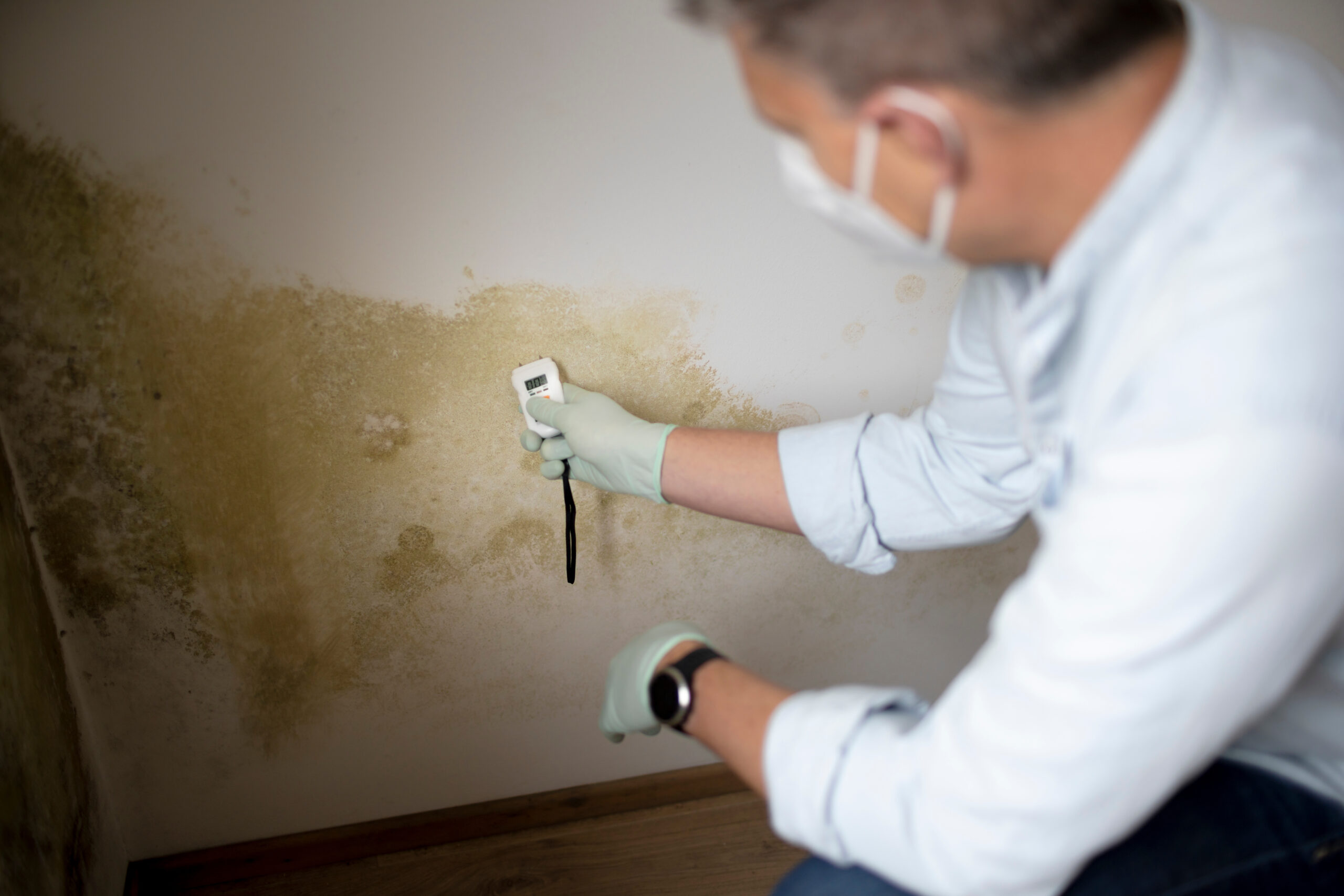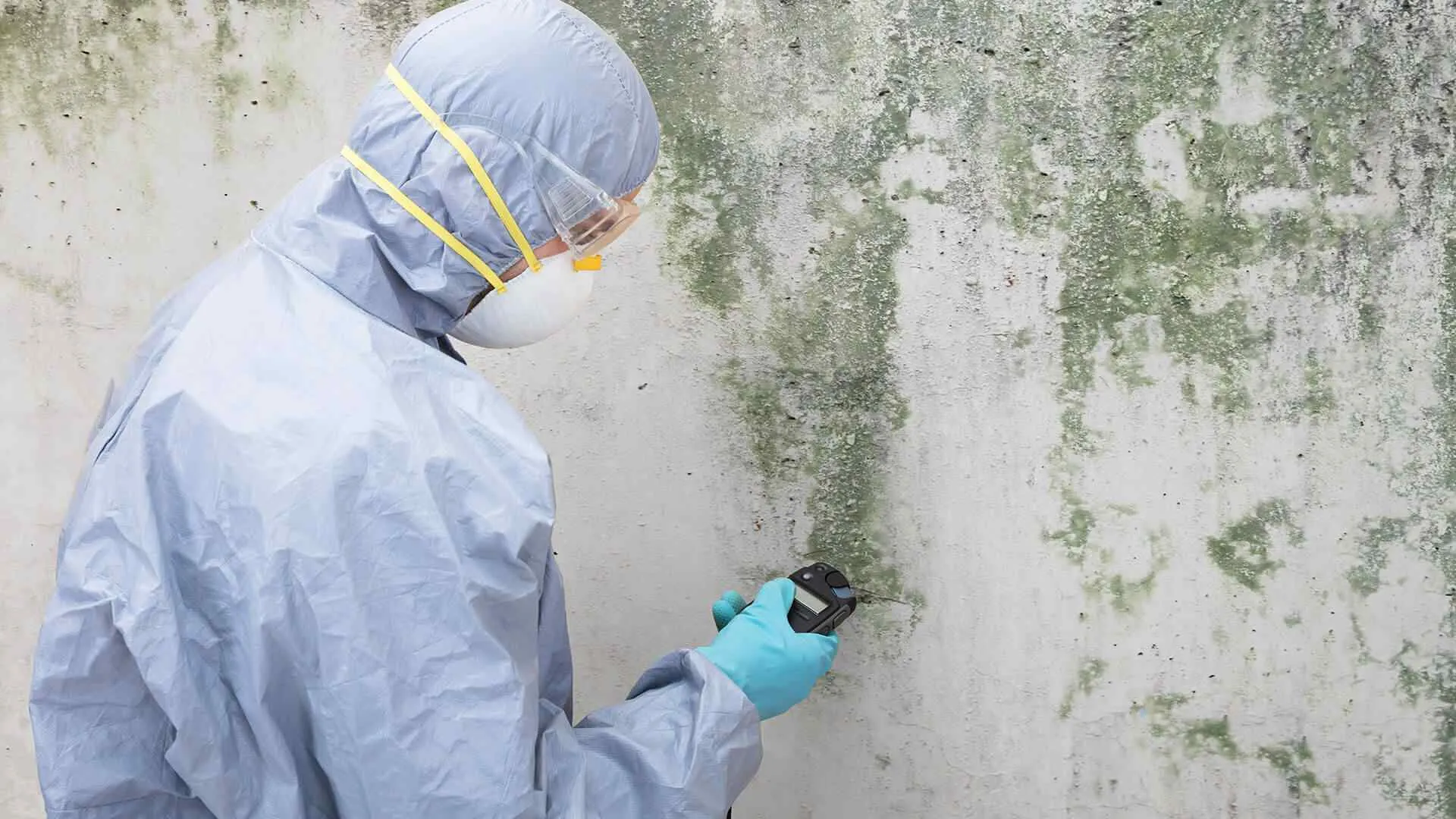
What Is Mold Testing and Why Is It Important?
Mold testing is a process used to determine the presence and type of mold in your home, as well as the concentration of mold spores in the air. Mold testing is important because certain types of mold, like black mold (Stachybotrys), can be toxic and lead to serious health issues, especially for those with allergies, asthma, or weakened immune systems.
While some mold is visible, not all mold problems are easy to spot. Mold testing can identify hidden mold growth behind walls, under flooring, or in other inaccessible areas. Mold spores can also be present in the air even if there is no visible growth, which is why air sampling is often part of the testing process.
How Much Does Mold Testing Cost?
The cost of mold testing can range from $300 to $1,000 or more, depending on several factors. The average cost for a basic mold inspection and testing is typically around $400 to $600. Here’s a breakdown of the factors that can influence the cost of mold testing:
1. Type of Mold Testing
The type of mold testing conducted will impact the overall cost. There are three common types of mold tests:
- Air Testing: Air samples are collected to measure the concentration of mold spores in the air. This is useful when mold growth is not visible. Air testing typically costs between $300 and $600, depending on the number of samples taken.
- Surface Testing: Surface samples (such as swabs or tape) are taken from visible mold growth to determine the type of mold present. Surface testing costs around $200 to $400.
- Bulk Testing: Involves taking materials like pieces of drywall or carpet to test for mold. Bulk testing can be more expensive, ranging from $500 to $800, depending on the number of materials tested.
2. Size of the Property
The larger your home, the more extensive the testing will be, which can increase the cost. Larger homes may require more air or surface samples, especially if mold is suspected in multiple areas. For homes over 4,000 square feet, you may need to budget closer to $1,000 for comprehensive testing.
3. Extent of the Mold Problem
If the mold issue is widespread, additional tests may be needed, leading to higher costs. In some cases, mold may be present in hard-to-reach areas such as attics, basements, or crawl spaces, requiring specialized equipment and more thorough inspections.
4. Professional Mold Inspection vs. DIY Kits
DIY mold testing kits are available for as little as $20 to $50, but they often provide unreliable results. Professional mold inspections, conducted by certified mold specialists, offer more accurate results and typically cost between $300 and $700. The peace of mind that comes with professional testing is usually worth the investment.
For more information on different types of mold testing, check out this EPA guide on mold testing.
Do You Need Professional Mold Testing?

Wondering if professional mold testing is necessary for your situation? Here are a few signs that indicate you may need mold testing in your home:
1. Visible Mold Growth
If you can see mold growing in your home, especially if it’s black mold, it’s important to get it tested to determine the type of mold and the extent of the contamination. Even small patches of mold can grow and spread quickly if left untreated.
2. Musty Odors
If your home has a persistent musty or earthy smell, especially in damp areas like basements or bathrooms, it could be a sign of hidden mold growth. Professional testing can help identify whether mold is present and where it’s coming from.
3. Unexplained Health Symptoms
Frequent allergy-like symptoms such as coughing, sneezing, or eye irritation can be caused by mold exposure. If you or your family members are experiencing these symptoms, especially in certain areas of your home, mold testing can help identify the source of the problem.
4. Recent Water Damage
If your home has experienced flooding, leaks, or other water damage, mold can begin growing within 24-48 hours. It’s a good idea to have your home tested for mold after any significant water damage event to ensure that mold spores aren’t present.
If you notice any of these signs, professional mold testing is highly recommended. For expert mold testing and removal, Citywide Mold Mitigation provides comprehensive mold inspection services to keep your home safe.
What’s Included in a Professional Mold Inspection?

A professional mold inspection typically includes the following steps:
1. Visual Inspection
The mold inspector will perform a thorough visual inspection of your home, looking for visible signs of mold, water damage, or moisture issues. They may also use tools like moisture meters or thermal imaging cameras to detect hidden mold behind walls or under flooring.
2. Air Sampling
Air samples are taken to measure the concentration of mold spores in the air. The samples are then sent to a laboratory for analysis to determine the type and levels of mold spores present.
3. Surface Sampling
Surface samples are taken from any visible mold growth using swabs, tape, or other collection methods. These samples are also sent to a lab to identify the specific type of mold present.
4. Mold Report
After the testing is completed, the mold inspector will provide you with a detailed report outlining the findings. This report will include information about the types of mold found, their concentration levels, and recommendations for mold removal or remediation if necessary.
If mold is found during the inspection, it’s essential to take action quickly to prevent the problem from worsening. For professional mold removal services, contact Citywide Mold Mitigation.
How to Save Money on Mold Testing
Mold testing can be expensive, but there are ways to save money without sacrificing accuracy. Here are a few tips:
1. Get Multiple Quotes
Before hiring a mold testing service, get multiple quotes from different companies. This will help you compare costs and find the best deal for your budget. Just make sure you choose a company with certified mold inspectors to ensure accurate results.
2. Consider a Mold Inspection Package
Some companies offer mold inspection packages that include testing, inspection, and remediation. While the upfront cost may be higher, bundling these services can save you money in the long run if you need both testing and mold removal.
3. Address Moisture Issues Early
Preventing mold from growing in the first place is the best way to avoid costly mold testing and remediation. Fix leaks, improve ventilation, and use a dehumidifier in damp areas to reduce the likelihood of mold growth.
FAQ
| Question | Answer |
|---|---|
| How much does a mold test cost? | On average, mold testing costs between $300 and $600, depending on the size of your home and the type of tests performed. Larger homes or more extensive testing can cost up to $1,000 or more. |
| Is mold testing worth the cost? | Yes, mold testing is worth the cost if you suspect mold growth, experience health issues, or have recently dealt with water damage. Professional testing can identify hidden mold and help prevent serious health risks and property damage. |
| Can I use a DIY mold testing kit? | While DIY kits are cheaper (around $20 to $50), they often provide unreliable results. Professional mold testing is more accurate and is recommended if you want to ensure your home is safe from mold. |
| Does homeowners insurance cover mold testing? | Homeowners insurance policies vary, but in many cases, mold testing is only covered if the mold is a result of a covered peril, such as water damage from a burst pipe. It’s best to check with your insurance provider to see if mold testing is covered. |
| How long does mold testing take? | The actual mold inspection usually takes a few hours, depending on the size of your home. Lab results from air or surface samples typically take 2-3 business days. |
If you’re ready to schedule mold testing for your home, contact Citywide Mold Mitigation for expert services and peace of mind.

